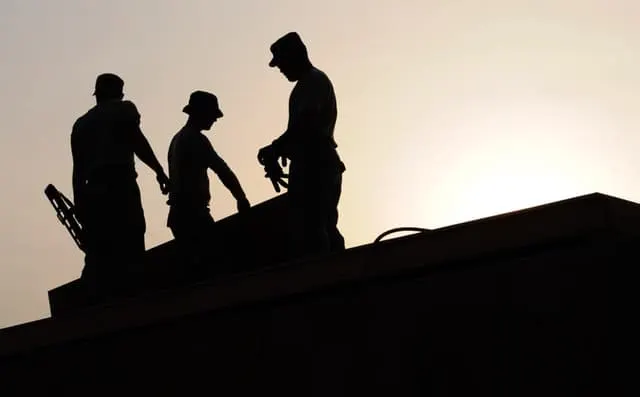
Construction sites produce large amounts of waste that can be recycled or upcycled, and some types of waste require special handling because they are hazardous to the environment.
Dealing with construction waste can be costly, but it is less expensive when you dispose of it properly. With the right tools, equipment, and systems, you can streamline the process and make it easier to manage.
Sustainable Waste Management
Worldwide, there are increased efforts to recycle and upcycle materials from various types of industrial waste. By using sustainable waste management practices, countries can reduce the amount of waste going into their landfills. These efforts also reduce the number of raw materials that need to be sourced.
According to the Environmental Protection Agency, construction and demolition created over 600 million tons of waste in the United States in 2018. However, more than 75% of that was reused, which means that almost 150 million tons of construction waste went into landfills. Over the next several decades, lawmakers will impose more regulations to bring the amount of waste that goes to landfills closer to zero.
Construction waste includes various materials, including building materials, hazardous waste, green waste, and mixed waste. Many building materials, including drywall, lumber, insulation, and paint, can be upcycled and must be kept separate during construction and demolition.
Use Self-Dumping Hoppers to Dispose of Construction Site Waste
The easiest and least expensive way to dispose of construction site waste is to use self dumping hoppers and dedicated dumpsters. Self-dumping hoppers are rugged and come in various shapes and sizes, and you can use them to quickly and efficiently move bulk materials from the work site to the dumpster.
As the name implies, self-dumping hoppers are easy to use. While you can’t always keep a dumpster container in your work area, you can put a self-dumping hopper anywhere, allowing workers to dispose of waste quickly. Hoppers can even be placed on casters so that you can bring them closer to your work.
Hoppers make it easier to keep your work areas clear of debris, making your job sites safer. They also help you maximize your labor hours by making waste disposal easier. When your self-dumping hopper is full, you simply pick it up with a forklift or skid steer and dump it in a dedicated dumpster container.
Use Dedicated Dumpsters to Keep Waste Separate
Using dedicated dumpsters to separate construction waste is an effective way to easily and quickly separate waste into different materials. In addition, this practice can save you money because it costs less to dispose of recyclable materials, and waste disposal costs are calculated based on the type of waste.
While you can recycle some materials from your construction site, you must carefully dispose of other types per local regulations. It’s much easier for waste management companies to recycle waste when you use a dedicated dumpster, and you can take advantage of any available local or state recycling programs.
There are strict regulations about the disposal of hazardous waste, such as asbestos and lead, so that type of material has to be kept separate. On the other hand, green waste, like organic materials and vegetation, is easily recycled using a dedicated dumpster.
Most of the construction waste that goes to landfills is a mixture of different types. As regulations tighten and landfills continue to fill up, the cost of disposing of mixed construction waste will continue to rise. Your construction company can save money by using self-dumping hoppers and dedicated dumpsters to reuse and recycle construction waste.
Create a Waste Management Plan for Your Construction Site
Creating systems is essential to any project, especially at construction sites. When you use a well-planned and detailed strategy for your construction waste, you save money by producing less waste, and you keep your workers safer.
Before designing and implementing a waste management plan for your construction company, research government websites to find out what resources are available in your area. There are programs to help you, like the National Institute of Health’s Construction Debris Program.
Proper waste disposal systems should establish procedures for hazardous and non-hazardous waste. In addition, they need to outline ways to protect workers and the environment from hazardous wastes and keep materials out of hazardous or recyclable landfills. Your waste management plan should also include worker training, so everyone knows how to dispose of materials properly.
Waste management plans should include procedures for reducing waste. Purchasing construction products in bulk is an effective way to reduce packaging waste. You can also find materials packaged with recyclable materials to reduce disposal costs. Whenever possible, reuse scraps and cutoffs to minimize waste. Have a place to store leftovers and train your workers to avoid throwing away anything they can use later.
Waste Management is Everyone’s Responsibility
Overall, managing construction waste is the responsibility of all construction companies. However, dedicated dumpsters, self-dumping hoppers, and a comprehensive waste management plan can reduce the amount of garbage construction businesses send to landfills.
Be sure to stay informed about the regulations in your area and use the resources available to you. With the right strategies, you can reduce costs and keep your construction sites safe and efficient.
- Sagittarius Man & Gemini Woman Love and Sex Compatibility - January 31, 2024
- Taurus Ascendant Rising Personality Traits in Men (Guide) - January 31, 2024
- How to Seduce and Attract a Sagittarius Man (Seduction Tips) - January 31, 2024
